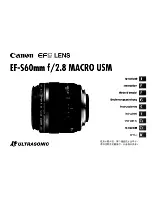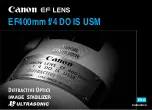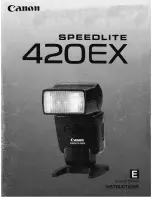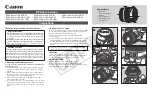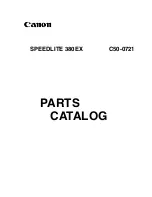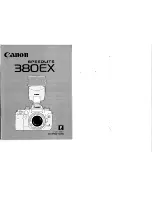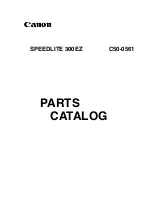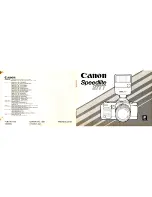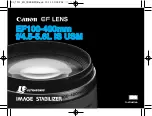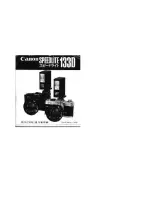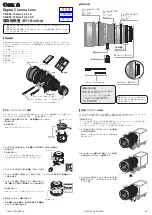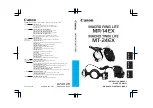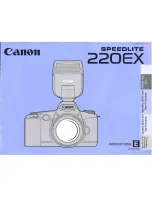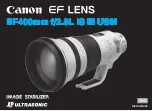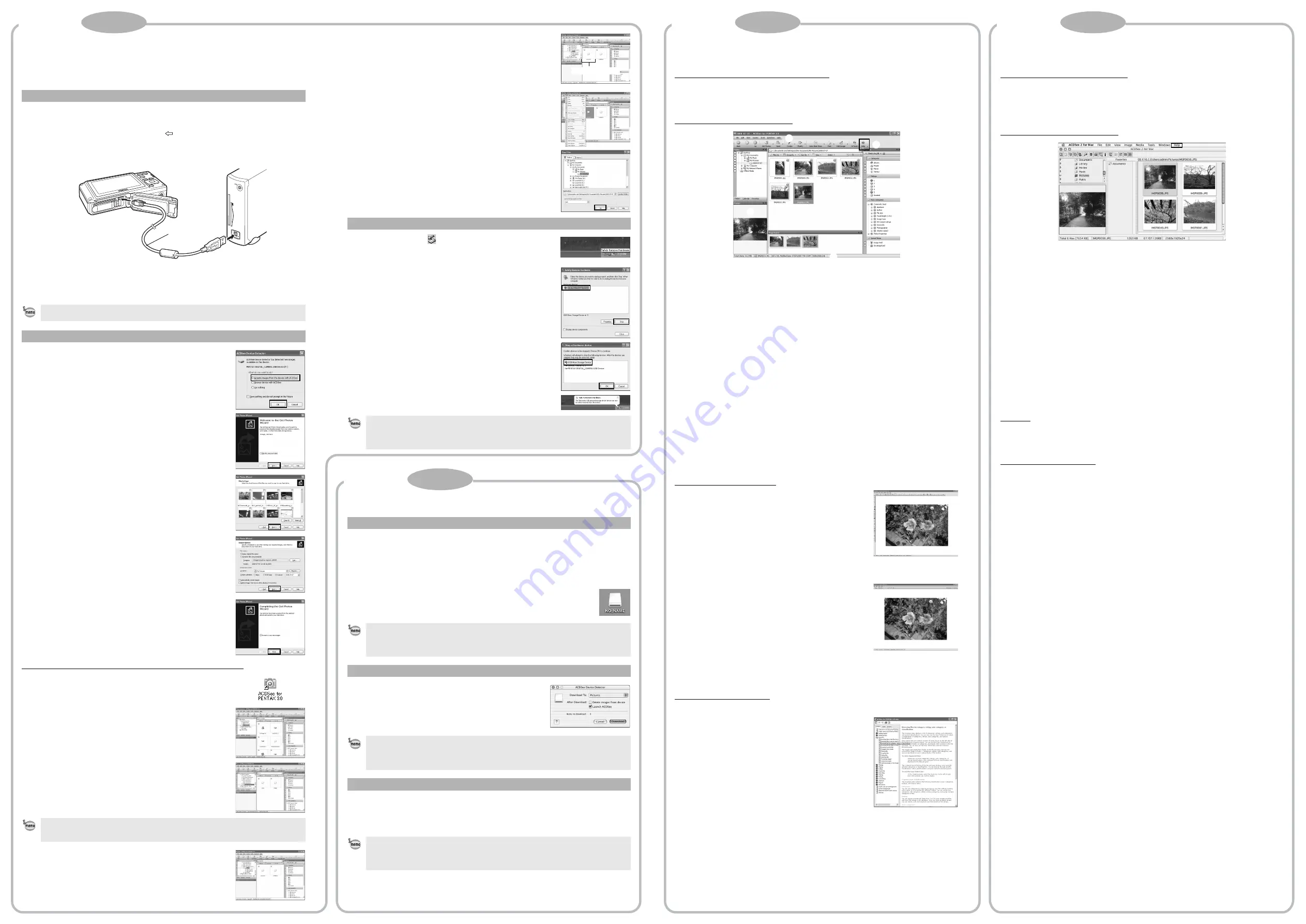
Transferring Images to a Windows PC
When the digital camera is connected to your Windows PC and the camera is turned on, the
PC automatically recognizes the camera and the confirmation dialog box for transferring
images (the Device Detector screen) appears.
1
Turn your PC on.
2
With your camera turned off, connect it to your PC using the USB cable.
Connect the terminal of the USB cable with
pointing toward the
4
on the PC/AV terminal
of the camera.
If there is no SD Memory Card in the camera, the images stored in the built-in memory will
be transmitted to your PC.
3
Turn your camera on.
The Device Detector screen appears automatically.
If the Device Detector screen does not appear, display and copy the images following the
steps in “When the Device Detector screen does not appear”.
4
Confirm that [Acquire images from the device with
ACDSee] is checked and click [OK].
5
Click [Next].
6
Select an image to copy and click [Next].
7
Specify [File names] and [Destination folder], and
click [Next].
The image is copied to the PC.
8
Click [Finish].
The “ACDSee for PENTAX 3.0” Browser starts.
When the Device Detector screen does not appear
4
Double-click the [ACDSee for PENTAX 3.0] icon on
the desktop.
5
Click [My Computer].
6
Double-click [Removable Disk].
7
Double-click the [DCIM] folder.
Images are stored in folders named by the shooting date
(“XXX_0707” for July 7. “XXX” is a three-digit number.).
If [Standard] is selected for [Folder Name] in the [
W
Setting] menu,
a folder named “XXXPENTX” (XXX is a three-digit folder number)
is displayed and images are stored here.
8
Select the folders you want to copy to the PC.
9
Select [Copy To Folder...] from the [Edit] menu.
The Copy Files screen appears.
10
Specify the destination folder.
11
Click [OK].
The folders or images are copied to the PC.
1
Double-click the
[Safely Remove Hardware] icon
in the task bar.
The Safely Remove Hardware screen appears.
2
Select [USB Mass Storage Device] and click [Stop].
The Stop a Hardware device screen appears.
3
Select [USB Mass Storage Device] and click [OK].
A message appears indicating that the hardware can be safely
removed.
4
Click [OK].
5
Disconnect the USB cable from your PC and the
camera.
Transferring Images to a Macintosh
1
Turn your Macintosh on.
2
With your camera turned off, connect it to your Macintosh using the USB
cable.
If there is no SD Memory Card in the camera, the images stored in the built-in memory will
be transmitted to your Macintosh.
3
Turn your camera on.
The camera is recognized as [NO_NAME] on the desktop. The drive name can
be changed.
4
Specify a save location, make sure that [Launch
ACDSee] is checked, and click [Download].
After images are copied to your Macintosh, the browser for
“ACDSee 2 for Mac” starts.
1
Drag [NO_NAME] on the desktop to the trash.
If the SD Memory Card has a volume label, drag the icon of that name to the trash.
2
Disconnect the USB cable from your Macintosh and the camera.
Connecting the Camera and PC
When connected via USB, the power lamp blinks when communicating with the PC.
Transferring Images
If the SD Memory Card has a volume label, the volume label name appears instead of
[Removable Disk]. A new unformatted SD Memory Card may show the manufacturer
name or model number.
2
Disconnecting the Camera from Your PC
• If the camera (removable disk) is being used by an application such as “ACDSee for
PENTAX 3.0”, the camera cannot be disconnected until the application is closed.
• The camera will automatically switch to the Playback Only mode when the USB cable is
disconnected.
Connecting the Camera and Macintosh
• If the SD Memory Card has a volume label, the volume label name appears instead of
[NO_NAME]. A new unformatted SD Memory Card may show the manufacturer name or
model number.
• When connected via USB, the power lamp blinks when communicating with a Macintosh.
Transferring Images
• When [Delete images from device] is checked, images are deleted from the camera after
transfer is complete.
• Even if camera images are not transferred, they can be directly displayed on the
Macintosh from a camera connected to the Macintosh.
Disconnecting the Camera from Your Macintosh
• If the camera (removable disk) is being used by an application such as “ACDSee 2 for
Mac”, the camera cannot be disconnected until the application is closed.
• The camera will automatically switch to the Playback Only mode when the USB cable is
disconnected.
Select the folder (s)
Using ACDSee for PENTAX 3.0
“ACDSee for PENTAX 3.0” lets you view, edit, organize, search for, share, and print images.
Starting “ACDSee for PENTAX 3.0”
1
Double-click the [ACDSee for PENTAX 3.0] icon on the desktop.
ACDSee starts and the main window, which is called the browser, appears.
ACDSee Browser Interface
A Menu bar
You can access the various menu commands.
B Toolbar
Provides quick access to shortcuts for frequently used tasks and functions.
C Folders pane
Displays the configuration of folders in your computer. When you browse a folder, the
contents of the folder appear in the File List pane.
D Preview pane
Displays a preview of the image or media file currently selected in the File List pane. You
can change the size of the preview image or play back the media file.
E File List pane
Displays the contents of the currently selected folder or the results of the most recent
search, in other words the file or folder that matches the search item. It is the only pane
that always appears in the Browser and it cannot be hidden or closed.
F Category pane
Displays a list of categories and priorities. By dragging and dropping files from the File List
pane to here, you can set category and priority for files.
G Image Basket pane
Displays files selected in the File List pane. By choosing images and files and putting them
in the Image Basket pane, you can use the editing and creating functions on images from
different folders and categories.
H Status bar
Displays information and properties for the selected file.
Viewer and Quick View
Double-click images in the browser that you want to display in
the Viewer. In the Viewer, you can enlarge, reduce, or edit
images using functions from the menu and tool bars.
Display images in Quick View by simply double-clicking them
from their folder on the PC. Images displayed can also be
enlarged or reduced from Quick View.
Click [Photo Manager] to switch to the browser and click [Full
Viewer] to switch to the Viewer. (You cannot return to Quick
View from the browser or Viewer.)
Using the Help Pages
Refer to the help pages for a more detailed description of how to use each function.
1
Click the [?] icon at the top right of the screen.
The help screen appears.
2
Double-click the desired topic.
Using “ACDSee 2 for Mac”
“ACDSee 2 for Mac” lets you display and manage images.
Starting “ACDSee 2 for Mac”
1
Double-click the [ACDSee] folder inside the [Applications] folder.
2
Double-click the [ACDSee 2 for Mac] icon.
ACDSee starts and the main window, which is called the browser, appears.
ACDSee Browser Interface
A Menu bar
You can access the various menu commands.
B Toolbar
Provides quick access to shortcuts for frequently used tasks and functions.
C Folders pane
Displays the configuration of folders in your computer. When you browse a folder, the
contents of the folder appear in the File List pane.
D Preview pane
Displays a preview of the image or media file currently selected in the File List pane. You
can change the size of the preview image or play back the media file.
E Favorites pane
You can add frequently used items (folders, etc.).
F File List pane
Displays the contents of the currently selected folder or the results of the most recent
search, in other words the file or folder that matches the search item. It is the only pane
that always appears in the Browser and it cannot be hidden or closed.
G Status bar
Displays information and properties for the selected file.
Viewer
Double-click images in the browser that you want to display in the Viewer. Images displayed
can be enlarged and reduced in the Viewer.
Using the Help Pages
Refer to the help pages for a more detailed description of how to use each function.
1
Select [ACDSee 2 for Mac] from [Help] on the menu bar.
The help screen appears.
2
Click the desired topic.
A
B
C
D
E
F
G
H
Viewer
Quick View
A
B
C
D
E
F
G
Windows
Step 5
Windows
Step 4
Macintosh
Step 4
Macintosh
Step 5



